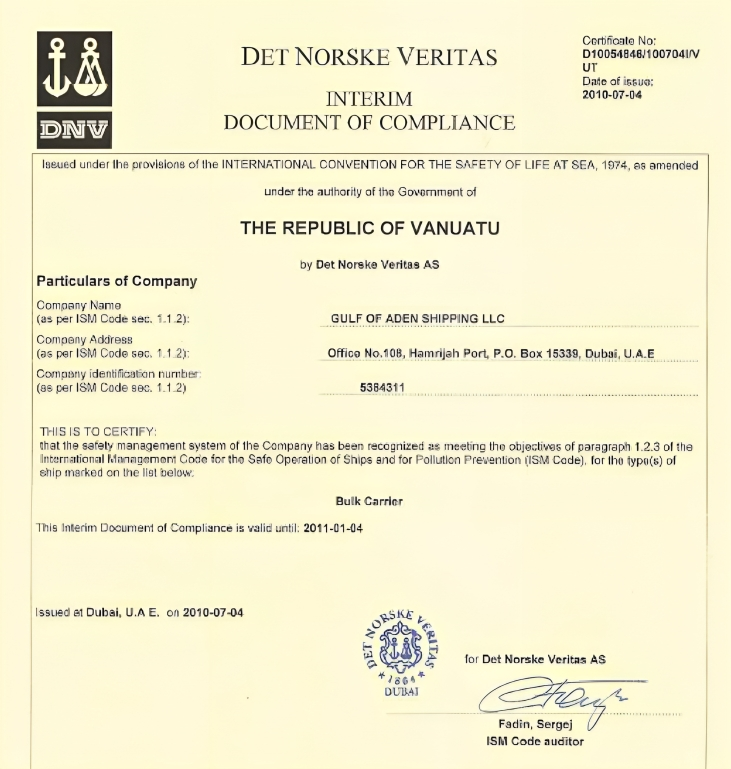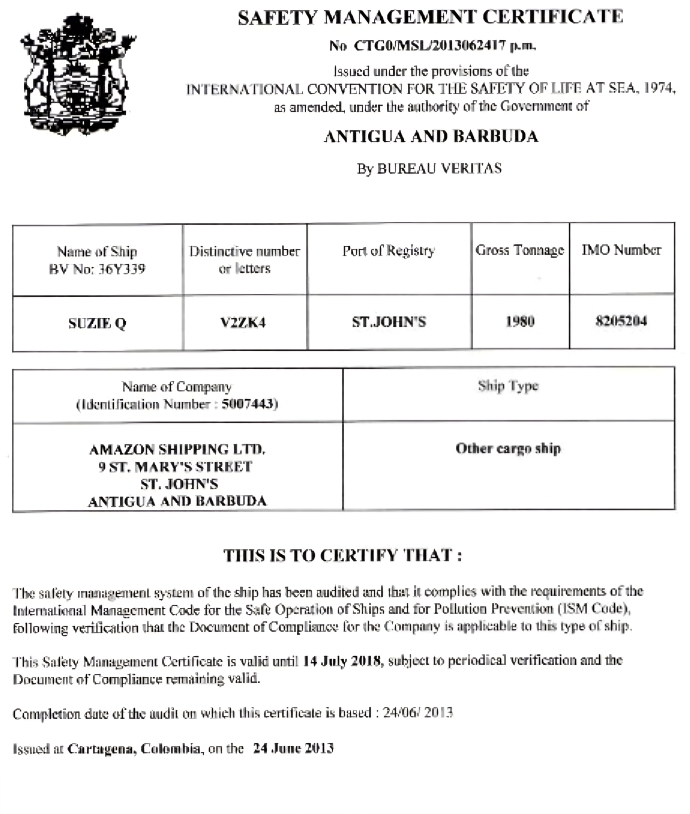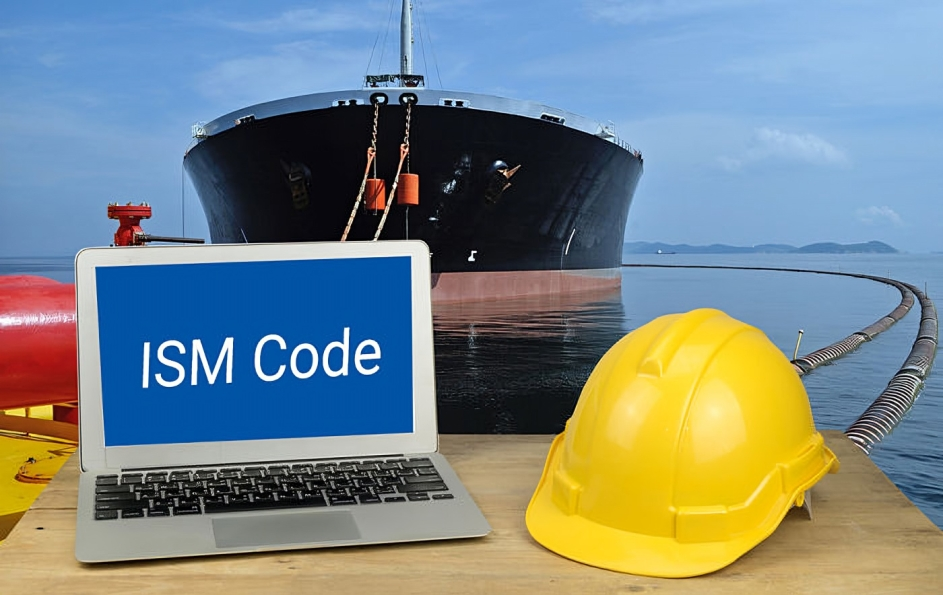The International Safety Management (ISM) Code is an essential international standard for the safe management and operation of ships, as well as pollution prevention. It was adopted in 1993 and entered into force on July 1, 1998 and Came into full existence on 1st July 2002 for all ships.
The ISM Code aims to ensure safety at sea, prevent human injury, ensure personnel safety, and avoid damage to the environment, especially the marine environment.
Key points about the ISM Code include:
- It is a required regulation in the marine industry and a vital component of the SOLAS Convention (Safety of Life at Sea).
- The code applies to all vessels, including oil tankers, cargo ships, passenger ships, and offshore structures.
- The objectives of the code focus on safety management by shipowners and top stakeholders, emphasizing safe working environments and risk assessment.
- The ISM Code includes provisions for company verification, evaluation of risks and hazards, personnel training, safety audits, inspections, and drills.
- The code requires well-defined tasks for qualified personnel and emphasizes communication between onshore and shipboard personnel.
- Purpose of ISM code
- Contents of International Safety Management (ISM Code)
- 3. Company Responsibility and Authority
- 4. Designated Person (Ashore) – DPA
- 5. Master’s responsibility and authority
- 6. Resources and personnel
- 7. Development of plans for shipboard operations
- 8. Emergency Preparedness
- 9. Reporting accidents and Non-conformities
- 10. Maintenance of Ship and Equipment
- 11. Documentation
- 12. Company Verification, Review and Evaluation
- 13. Certification and Periodical Verification (Part-B)
- 14. Interim Certification
- 15. Verification16. Forms of Certificates
Purpose of ISM code
- To ensure Safety at Sea
- To prevent human injury or loss of life
- To avoid damage to the environment and to the ship.
SOLAS adopted the ISM Code in 1994 and incorporated it into chapter IX. By 1998 much of the commercial shipping community was required to be in compliance with the ISM code. ISM Came into full existence on 1st July 2002 for all ships.
The ISM Code requires that safeguards be established against the safety and pollution risks involved in shipboard operations, while giving the flexibility to develop and tailor a safety system to an owner’s/ship manager’s specific operation while complying with regulatory requirements.
Responsibility for this is placed firmly on the companies charged with the ship’s management.
Contents of International Safety Management (ISM Code)
The ISM Code is divided into 13 sections
- GENERAL
- SAFETY AND ENVIRONMENTAL PROTECTION POLICY
- COMPANY RESPONSIBILITIES AND AUTHORITY
- DESIGNATED PERSONS
- MASTERS RESPONSIBILITY AND AUTHORITY
- RESOURCES AND PERSONNEL
- DEVELOPMENT OF PLANS FOR SHIPBOARD OPERATIONS
- EMERGENCY PREPAREDNESS
- REPORTS AND ANALYSIS OF NON-CONFORMITIES, ACCIDENTS AND HAZARDOUS OCCURRENCES
- MAINTENANCE OF THE SHIP AND EQUIPMENT
- DOCUMENTATION
- COMPANY VERIFICATION, REVIEW AND EVALUATION
- CERTIFICATION, VERIFICATION AND CONTROL
1. General
ISM requires every company to develop, implement and maintain a Safety Management System (SMS) which includes
- A safety and environmental-protection policy
- Ensure safe operation of ships and protection of the environment in compliance with relevant international and flag State legislation
- Defined levels of authority and lines of communication between, and amongst, shore and shipboard personnel
- Procedures for reporting accidents and non-conformities
- Procedures to prepare for and respond to emergency situations
- Procedures for internal audits and management reviews.
2. Safety And Environmental Protection Policy
The company should establish and document a safety and environmental protection policy which should describe how the listed objectives will be achieved.
The company should ensure that the policy is implemented and maintained at all levels of the organization both ship based as well as shore based.
- Company’s objective must include at least following
- Safe working environment
- Safeguards against all identified risks
- Improvement of safety skills of personnel on ship & ashore.
- Establish safe working practices for critical ship operations in compliance with relevant international & Flag State legislations
3. Company Responsibility and Authority
There must be disclosure from the owner to the administration as to who is responsible for the operation of the ship.
The company should define and document responsibility, authority and interrelation of all personnel who manage, perform and verify work relating to and affecting safety and pollution prevention.
The company must ensure there are adequate resources and shore based support for the designated person or persons to carry out their function.
4. Designated Person (Ashore) – DPA
A DPA is the key person to ensure effective implementation of the company’s Safety Management System (SMS).
The company shall designate a person who shall be responsible for monitoring the safe and efficient operation of each ship. The company should ensure that the DPA is provided with sufficient authority and resources to carry out his duties.
A DPA has direct access to the highest levels of management and provides a link between the company and those on board. He should monitor the safety and pollution prevention aspects of the operation of each vessel and ensure that adequate shore side resources and support is available.
The DPA shall take necessary steps to ensure compliance with the safety management system.
Ensure that proper provision is made for each ship to be manned, equipped and maintained so that it is fit to be operated as per the safety management system.
5. Master’s responsibility and authority
The roles and responsibilities of the Master should be clearly defined by the company with regard to
- implementing the safety and environmental-protection policy of the Company;
- motivating the crew in the observation of that policy;
- issuing appropriate orders and instructions in a clear and simple manner;
- verifying that specified requirements are observed; and
- periodically reviewing the safety management system and reporting its deficiencies to the shore-based management.
The company should ensure that the SMS operating onboard the vessel contains a clear statement emphasizing the master’s authority.
The company should make it clear that the Master has the overall responsibility for decision making and has overriding authority with the option of adequate shore back up.
6. Resources and personnel
The company should ensure that the Master is suitably qualified and fully conversant with the SMS. They should also ensure that the ship is correctly manned.
The company should ensure that there is adequate familiarization with safety and protection of the environment for new personnel. They should ensure that the personnel has an adequate understanding of the relevant rules, regulations, guidelines and codes.
Training is to be provided where necessary and Relevant information for the SMS should be promulgated and be written in an easy to understand method.
7. Development of plans for shipboard operations
SMS will ensure that a system is in place for on board generation of plans and instructions for key shipboard operations. These tasks may be divided into two categories viz. Special operations and Critical shipboard operations.
Special shipboard operations are those where errors become evident only after a hazardous situation or accident has occurred e.g. ensuring water tight integrity, navigational safety (chart corrections, passage planning), maintenance operations, bunker operations etc.
Critical shipboard operations are those where an error will immediately cause an accident or a situation that could threaten personnel, environment or vessel. e.g. navigation in confined waters, operation in heavy weather, bunker or oil transfers, cargo operations on tankers etc.
8. Emergency Preparedness
The Company should identify potential emergency shipboard situations, and establish procedures to respond to them.
The Company should establish programs for drills and exercises to prepare for emergency actions.
The Company should ensure that the Company’s organization can respond at any time to hazards, accidents and emergency situations involving its ships.
9. Reporting accidents and Non-conformities
Nonconformity – An observed situation where objective evidence indicates the non-fulfillment of a specified requirement.
Major NC – an identifiable deviation that poses a serious threat to the safety of personnel or the ship or a serious risk to the environment that requires immediate corrective action. It indicates a major lapse in the implementation of the ISM code..
Objective Evidence – information pertaining to safety which is based on facts that can be verified by analysis, measurement, and observation.
The safety management system should include procedures ensuring that non-conformities, accidents and hazardous situations are reported to the Company, investigated and analyzed with the objective of improving safety and pollution prevention.
The Company should establish procedures for the implementation of corrective action, including measures intended to prevent recurrence.
10. Maintenance of Ship and Equipment
The Company should establish procedures to ensure that the ship is maintained in conformity with the provisions of the relevant rules and regulations and with any additional requirements which may be established by the Company.
Company should ensure that inspections are held at appropriate intervals; any non-conformity is reported, with its possible cause if known; appropriate corrective action is taken and records of these activities are maintained.
The Company should identify equipment and technical systems, sudden operational failure of which may result in hazardous situations.
The safety management system should provide for specific measures aimed at promoting reliability of such equipment or systems.
These measures should include the regular testing of stand-by arrangements and equipment or technical systems that are not in continuous use and be included in maintenance schedule.
11. Documentation
The Company should establish and maintain procedures to control all documents and data which are relevant to the safety management system.
The Company should ensure that valid documents are available at all relevant locations; changes to documents are reviewed and approved by authorized personnel; and obsolete documents are promptly removed.
The documents used to describe and implement the safety management system may be referred to as the Safety Management Manual.
Documentation should be kept in a form that the Company considers most effective. Each ship should carry on board all documentation relevant to that ship.
12. Company Verification, Review and Evaluation
The Company should carry out internal safety audits on board and ashore at intervals not exceeding twelve months to verify whether safety and pollution-prevention activities comply with the safety management system.
In exceptional circumstances, this interval may be exceeded by not more than three months.
The Company should periodically evaluate the effectiveness of the safety management system in accordance with established procedures.
The audits and possible corrective actions should be carried out in accordance with documented procedures.
Personnel carrying out audits should be independent of the areas being audited unless this is impracticable due to size & nature of the Company.
The results of the audits and reviews should be brought to the attention of all personnel having responsibility in the area involved.
The management personnel responsible for the area involved should take timely corrective action on deficiencies found.
13. Certification and Periodical Verification (Part-B)
On compliance to ISM Code, two certificates as mentioned below are issued by the Flag State.
The Document Of Compliance (DOC) is issued to the company following a successful audit of the shore side aspects of the Safety Management System. Before issue of this certificate, it is verified that the system has been in operation on at least one type of ship in the companies fleet for a period of three months.
The DOC is only valid for the ship types explicitly indicated in the document and is valid for 5 years subject to annual verification ( + 3 months).
The Safety Management Certificate (SMC), is issued to each ship after the initial audit. Before issuing the SMC, it is verified that SMS has been in operation for 3 months prior to audit and DOC is valid.
This certificate is valid for 5 years subject to verification between the second and third anniversaries with a provision for more frequent audits if necessary.
14. Interim Certification
A temporary DOC with 12 month’s validity may be issued to a newly formed company or a company acquiring a new type of vessel as long as they have a SMS meeting the minimum requirements of the ISM code and can demonstrate plan for full compliance.

A temporary SMC with 6 month’s validity may be issued to a new building or when a company takes of the responsibilities for the running of a vessel.

15. Verification
16. Forms of Certificates
Also Read, Certification under ISM Code Explained
Overall, the ISM Code plays a crucial role in promoting safety culture in the maritime industry, standardizing safety management practices, enhancing competency, improving emergency preparedness, and facilitating continuous improvement in shipping practices globally

